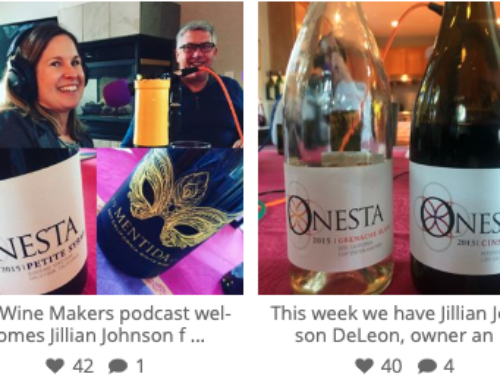Our Rosé fruit is grown in the oldest vineyard in Lodi, California. The Bechthold Vineyard, planted in 1886, is the oldest Cinsault vineyard in the world. The vines are head trained and organically farmed without irrigation. The sandy soil saved this vineyard from phylloxera infection, an epidemic that forced winegrowers to replant vineyards throughout Europe and America. Phylloxera cannot live in sandy soil, so you will see most old vines (80+ years old) are situated in sandy soils.
Cinsault is known as the “King” of grape varieties in France for producing the popular pale colored Rosés of Provence. The clusters on a Cinsault vine are huge, almost like a table grape. These juicy berries provide great yield and the skins are low in tannin, perfect for making an elegant Rosé wine. One side of the Bechthold vineyard is bordered by a cement lined water canal, which seeps water into the soil surrounding it. The roots on the old Cinsault vines run deep, almost 30 feet, so the vines near the canal have a steady drink of water. These vines are twice as big as the other vines in the vineyard, produce more fruit and bigger clusters, perfect for Rosé.
When it is time to harvest, the pickers arrive at the vineyard at dawn to hand harvest the fruit in the cool morning hours. We do a mix of whole cluster pressing and destemming the fruit before pressing. Destemming the fruit helps to break open the berries and release juice for extracting color from the skins. We roll the fruit in the press for a couple hours before starting the press cycle. The short skin contact time allows just enough color from the skins to give a pink color to the juice. We use lots of dry ice to protect the juice from oxygen and cool the juice down during pressing. The juice is collected in a tank and cooled to 50F to clarify before starting fermentation. The skins are almost dry after pressing and are transported to the vineyard for composting.
The steps involved in processing Rosé fruit are much more technical and time consuming compared to making white or red wines, mostly due to the skin contact time needed to extract just the right amount of color. Because of the time spent making our Rosé, we enlist some local goats to watch over the wine 🙂
Next time you enjoy a glass of Onesta Rosé, think about all the history and different steps involved in getting the wine in the bottle. Cheers!




